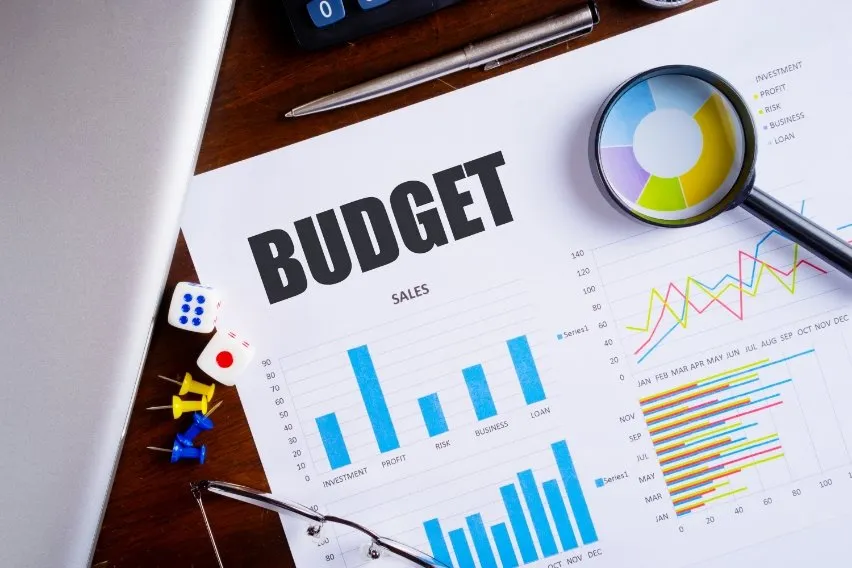Agile Budgeting: Managing Costs Without Compromising Sprint Goals
7 min read

In the world of Agile, there’s a constant tug-of-war between doing things fast, doing things right, and keeping an eye on the money. Every project manager, Scrum master, and product owner has faced the challenge of keeping sprint goals on track while not letting the budget spiral out of control. But can Agile flexibility and a fixed budget really get along? Absolutely. In fact, Agile budgeting can be a game-changer when done right, making it possible to stick to your goals while managing costs effectively. Let’s dive into how you can do this without the headache!
Also read: The Hidden Costs of Manual Sprint Reporting: How Automation Can Save You 8+ Hours Every Week
The Budgeting Juggle: Fixed Costs vs. Agile Flexibility
Agile is all about flexibility. Teams are expected to adapt quickly, pivot when necessary, and constantly iterate to improve. Meanwhile, budgets? Well, they’re often set in stone. When you’re trying to manage fixed costs with an Agile approach, things can get tricky.

So, how do we marry the two?
The answer is in finding a balance.
Agile teams aren’t expected to deliver everything on a fixed schedule, but they do need to deliver value — and they need to do it within the financial constraints set by the company. It's about aligning the sprint goals with the available budget in a way that doesn’t sacrifice quality or delivery timelines.
Also read: Future-Proofing Projects: Integrating AI and ML into Agile Workflows
Pro Tips for Aligning Sprint Budgets with Fixed-Cost Constraints
Chunk It Down: Break Features into Smaller Stories

Agile’s focus on breaking large features into smaller user stories isn’t just a good practice for project management, it’s a great way to keep tabs on costs. Instead of trying to budget for a massive feature, break it down into bite-sized stories that are easier to estimate in terms of both effort and cost. This way, you can track expenses as you go and make adjustments if needed without throwing everything out of whack.
Link Story Points to Cost

You know how teams estimate story points based on effort? Why not take it a step further and associate each story point with a cost? You don’t have to get super granular, but by using historical data or industry averages, you can create a general understanding of how much a story point “costs” in terms of resources. This allows for a clearer picture of where your budget is going, even if the scope of work is still shifting.
Prioritize Based on ROI, Not Just Time

Budgeting is about more than just cutting corners or squeezing the most out of your resources. It's about getting the best bang for your buck. Make sure you prioritize the features that bring the highest value with the lowest cost. Not everything needs to be delivered in one go. If something can wait or isn’t going to move the needle much, leave it for later. This strategy ensures you’re getting more value out of every dollar spent.
Incorporate Budgeting into Sprint Planning

Ideally, you should be factoring the budget into the sprint planning process, not tacking it on as an afterthought. During sprint planning, make sure the team knows the budget constraints and understands how much they can spend to hit their goals. This keeps everyone on the same page and makes the process smoother.
Also read: Data-Driven Decision-Making: Leveraging Sprint Metrics for Strategic Insights
Advanced Financial Tracking: Keeping an Eye on the Dollar Without Losing Focus

Financial tracking doesn’t need to be a separate, cumbersome task. When done right, it can be integrated seamlessly into your Agile process. Here's how:
Use Real-Time Tracking Tools
Forget about waiting until the end of a sprint to figure out where the money went. There are plenty of project management tools out there — Middleware Jira Plugin, Trello, or Monday.com — that integrate with financial software, giving you real-time insight into where your money is going. Check out the top 20 project management tools. This allows for ongoing adjustments so you don’t have any unpleasant surprises when the sprint wraps up.
Forecasting: Look Into the Crystal Ball

Financial forecasting is your best friend when it comes to staying on top of costs. By tracking historical data and analyzing trends from previous sprints, you can predict future costs. This doesn’t just give you a rough idea of what to expect — it lets you plan ahead, allowing you to make adjustments if things start to go over budget.
Cost of Delay: Weigh the Consequences

One of the more interesting aspects of Agile budgeting is the concept of “cost of delay.” This means assessing how much it will cost if a feature or task is delayed — not just in terms of money, but also in lost opportunities, customer satisfaction, or business outcomes. Understanding the cost of delay helps you prioritize work that’s essential to the project’s success, ensuring the budget is spent where it matters most.
Track Team Velocity and Spend Correlation
You’ve heard of team velocity — how much work your team can handle in a sprint. But have you ever thought about correlating that with cost? Tracking team velocity alongside financials helps you understand how efficient your team is relative to what you're spending. If you’re getting a high amount of work done for relatively little spend, great! If not, it might be time to rethink your approach.
Talking Money with Non-Technical Stakeholders: Making Sense of the Budget
One of the biggest hurdles with Agile budgeting is explaining it to non-technical stakeholders. Your CEO or CFO might not care that you’ve completed 10 story points; they want to know if the project’s on track financially. Here’s how to make that conversation a bit smoother:
Speak in Terms of Business Value, Not Technical Jargon

Technical language can be a barrier. Rather than saying something like, “We’ve completed 10 user stories,” explain what that actually means for the business. For example: “By completing these features, we’ve addressed a critical customer need, which should increase retention by 20%.” Make it clear that every dollar spent is an investment in business value.
Visualize the Budget with Dashboards

Numbers on a spreadsheet are great for accountants, but for most non-technical people, they’re a bit dry. Use simple, visual dashboards to show the current status of the project. Tools like Middleware Jira Plugin and other project management software let you create easy-to-understand charts and graphs that show both progress and financial status. Visualizing the data makes it easier for stakeholders to grasp how the project is performing, both from a technical and financial perspective.
Set Financial Milestones and KPIs

Setting clear, measurable financial milestones ensures that both technical and non-technical teams know when and how the budget is being met. This could be anything from achieving certain cost-saving targets to hitting revenue-based KPIs. These milestones help everyone stay focused on the bottom line.
Wrapping It Up
Agile budgeting doesn’t have to be an impossible task. By breaking down features, linking costs to effort, prioritizing based on ROI, and keeping financial tracking integrated with your Agile process, you can manage costs without sacrificing your sprint goals. And when it comes to communicating with non-technical stakeholders, make sure you speak their language, use visuals, and focus on the value delivered. With the right approach, you’ll not only keep your budget on track but also ensure that your Agile team delivers maximum impact, without the financial headache!

To streamline financial tracking and improve transparency, integrate the Middleware Jira Plugin. It helps bridge the gap between Agile processes and budget management, ensuring your team stays aligned, on budget, and focused on delivering value.
FAQ
How do you manage costs in Agile projects?
Costs in Agile projects are managed by continuously tracking effort and progress, breaking down features into smaller tasks, and prioritizing based on ROI. Regular reviews ensure adjustments are made to stay within budget.
What is the Agile approach to budgeting?
The Agile approach to budgeting focuses on flexibility and adaptability. Budgets are iteratively adjusted based on project progress, with priorities shifting as needed to maximize value delivery and minimize waste.
How could you estimate the budget for an Agile project?
To estimate the budget for an Agile project, break down the project into smaller features or user stories, estimate the effort required for each, and align resources to develop a flexible, iterative budget that evolves with the project.
How is budgeting done in a Scrum project?
In Scrum, budgeting is based on sprints, with costs estimated per sprint based on team capacity and effort required. Regular sprint reviews help adjust the budget to reflect the evolving project scope and priorities.

